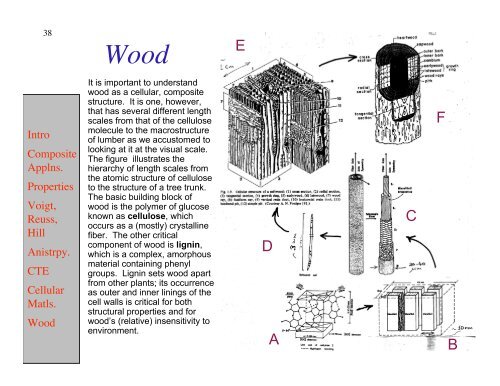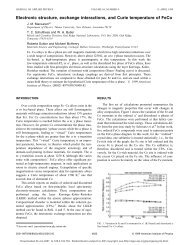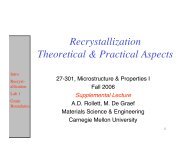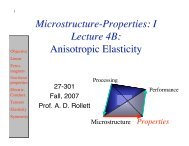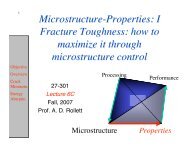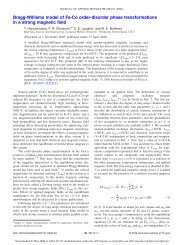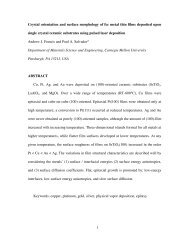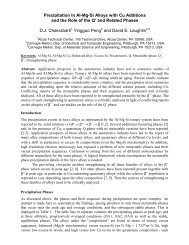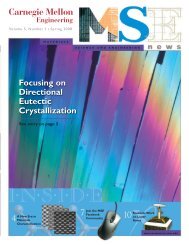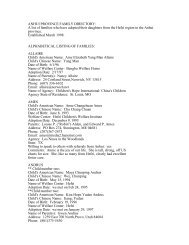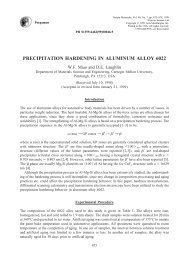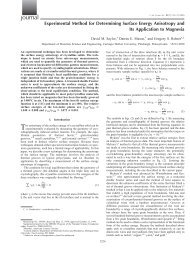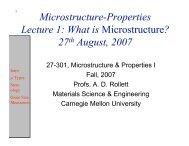L7 composites - Materials Science and Engineering
L7 composites - Materials Science and Engineering
L7 composites - Materials Science and Engineering
Create successful ePaper yourself
Turn your PDF publications into a flip-book with our unique Google optimized e-Paper software.
38<br />
Intro<br />
Composite<br />
Applns.<br />
Properties<br />
Voigt,<br />
Reuss,<br />
Hill<br />
Anistrpy.<br />
CTE<br />
Cellular<br />
Matls.<br />
Wood<br />
Wood<br />
It is important to underst<strong>and</strong><br />
wood as a cellular, composite<br />
structure. It is one, however,<br />
that has several different length<br />
scales from that of the cellulose<br />
molecule to the macrostructure<br />
of lumber as we accustomed to<br />
looking at it at the visual scale.<br />
The figure illustrates the<br />
hierarchy of length scales from<br />
the atomic structure of cellulose<br />
to the structure of a tree trunk.<br />
The basic building block of<br />
wood is the polymer of glucose<br />
known as cellulose, which<br />
occurs as a (mostly) crystalline<br />
fiber. The other critical<br />
component of wood is lignin,<br />
which is a complex, amorphous<br />
material containing phenyl<br />
groups. Lignin sets wood apart<br />
from other plants; its occurrence<br />
as outer <strong>and</strong> inner linings of the<br />
cell walls is critical for both<br />
structural properties <strong>and</strong> for<br />
wood’s (relative) insensitivity to<br />
environment.<br />
E<br />
D<br />
C<br />
F<br />
A B


